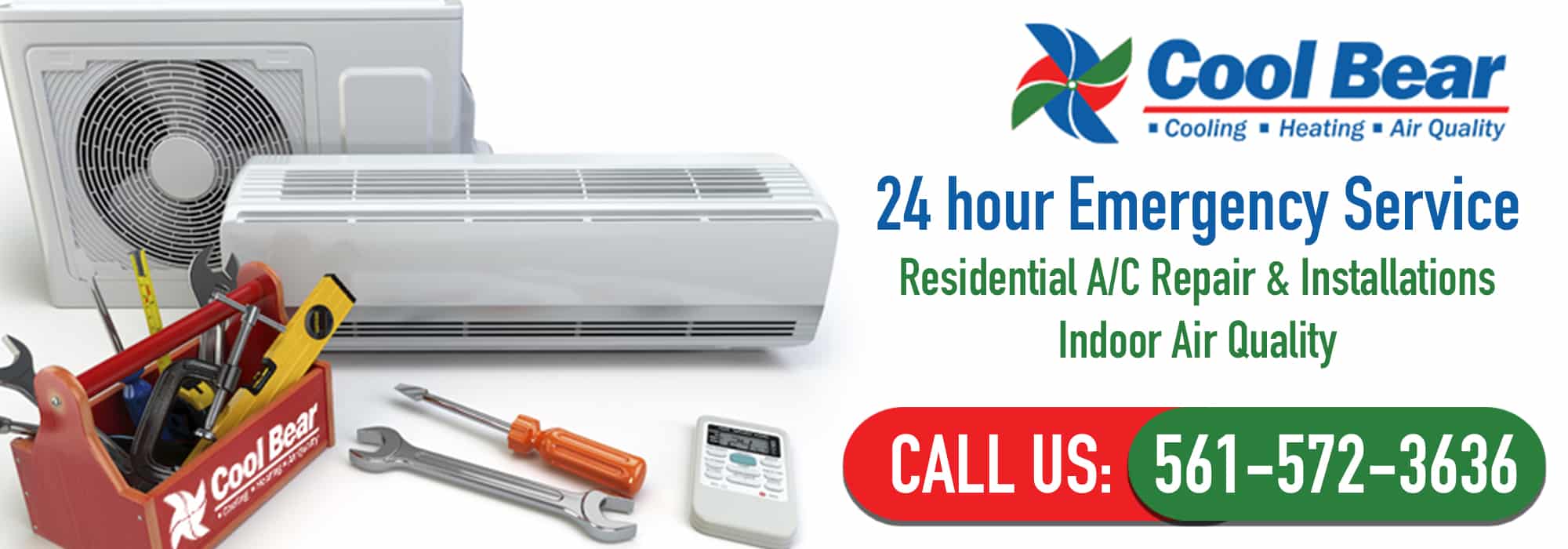The main condensate drains usually pour its content into the sewer system of a house. This is done through a connection that is open to an active trap. For most instances, these traps are of the bathroom sink trap and the bathtub. Should this be your case, be sure to read the special instructions in maintenance handouts to know about it.
Should the evaporator coil's primary drain line become blocked or should the primary drain develop a leak, condensate should overflow or leak into the emergency drain pan thence into the emergency drain line. The emergency condensate drain line, drain line, drains to a conspicuous place outside the home. Water dripping from the emergency drain line is a warning indicator that something is drastically wrong with primary condensate drain system. You should not delay in calling Cool Bear service technician for help.

Problems with primary condensate drain lines come from plant pollen, fungus spores and other particulate matter entrained in the air stream passing over the wet evaporator coil. They are captured by the condensate draining off the coil and are carried into the drain system. There they produce algae, mildew, and fungus growths which can block the primary drain system. While the emergency drain lines are generally dry and clear, they are open to the atmosphere. Wasps, called mud-daubers, are known to nest in these open-drain lines, thereby rendering them useless; always at the wrong time.
The larger diameter pipe of the household sewer system yields two results. First, it usually precludes problems with condensate. Second, the maintenance and repair beyond the open connection to the p-trap are outside the scope of the air conditioning technician. Some older systems drain into an inactive p-trap; this can lead to the long-term build-up of sediment, dried algae, etc. In the trap and result in an overflow of the plumbing drain system. If the active p-trap also services a bathtub or bathroom sink, blocking can be caused by hair, soap scum or other material draining from the tub or sink. Blocking in the household sewer system require the services of a licensed plumber.
When fixing this problem, Cool Bear technicians first test both the primary and emergency drain with water. If a restriction is detected, the obstruction is cleared with compressed air. Blowing out a drain line will usually open a blocked drain line, but it cannot remove growing algae or other deposits from the pipe wall. The technician will place algaecide tablets in the primary drain pan. While algaecide is used to prevent algae buildup, algaecide kills any existing algae. The dead algae may slough off the pipe wall and pass into the sewer system or drift downstream to a restriction and accumulate there resulting in a blocked drain.

Other measures these technicians may recommend are the installation of a float switch in the emergency condensate drain pan and an easy clear, clean out valve. Should both the primary and emergency drain systems fail, the float switch functions to turn off the air conditioning system, stopping the production of condensate until the clog is cleared and the drain pan emptied.
Despite all of these precautions, there can be no guarantee that your condensate drain system will remain clear. Your condensate drain system can become blocked at any time and should be watched closely after it has been serviced, especially when algaecide has been applied. Older systems with accumulations of algae can become blocked anytime algae break loose from the pipe wall and drifts downstream to a restricted point. At a restriction, algae will accumulate and grow unit it blocks the drain pipe. These restrictions can grow into a fully blocked drain line in less than one month. This job can be well be done by an expert. You should never try fixing it yourself since it will lead to many problems developing.
For a consultation and appointment contact us today at (561) 424-6437

